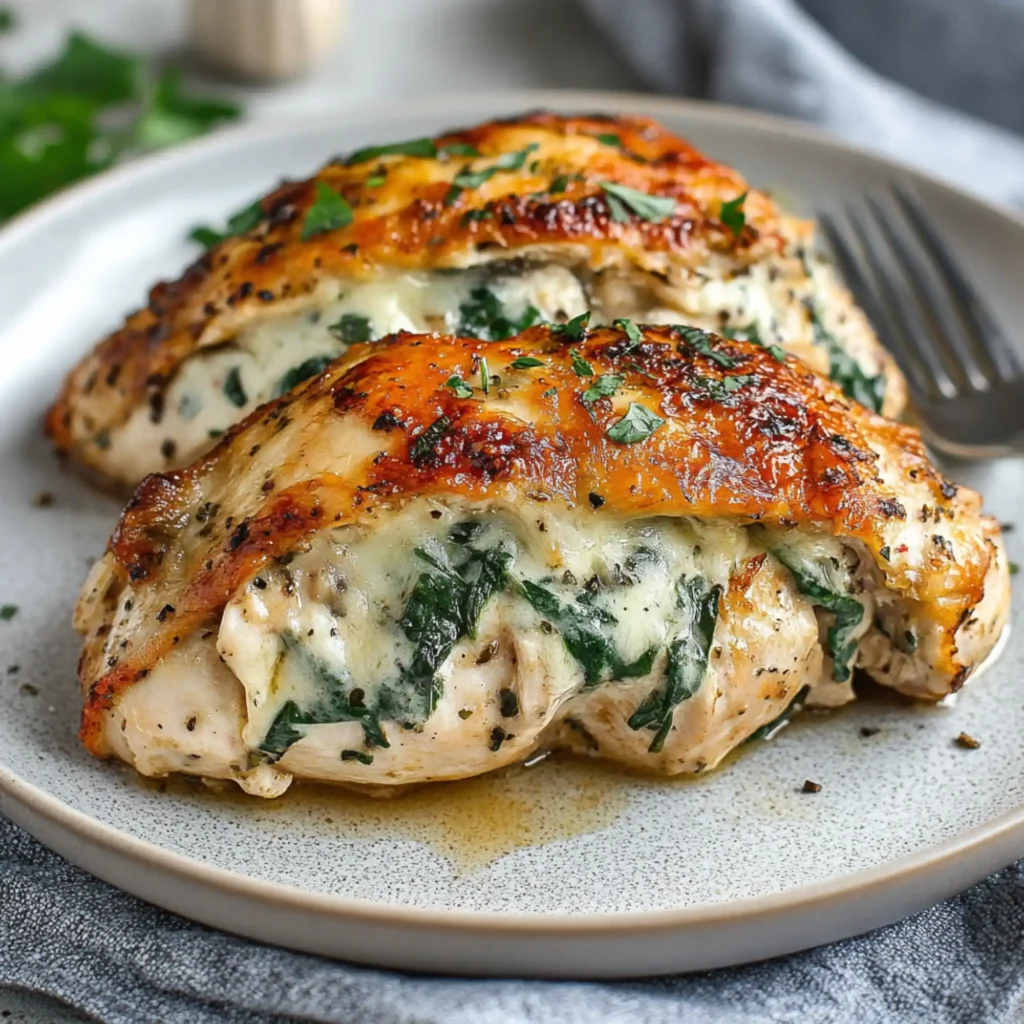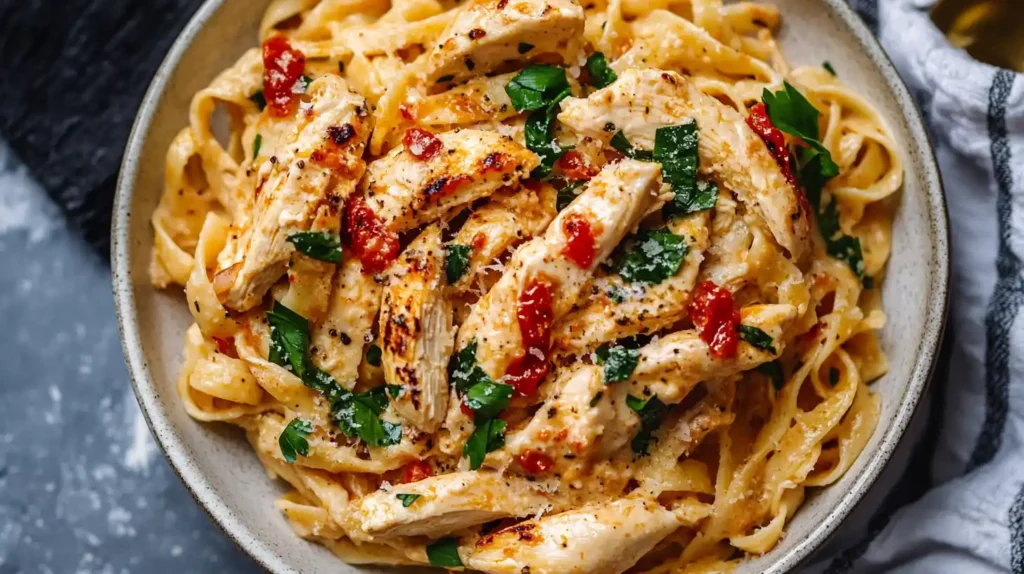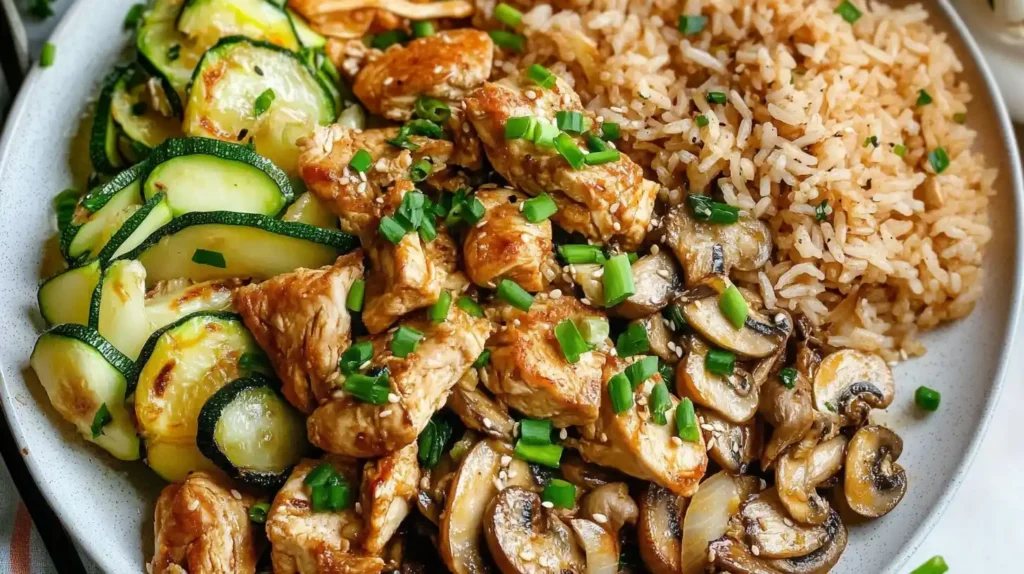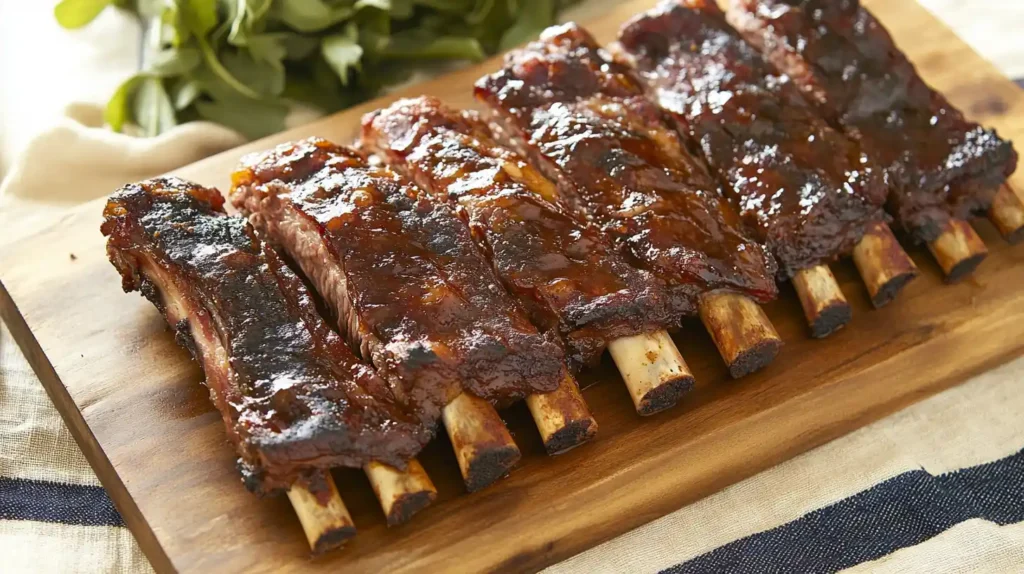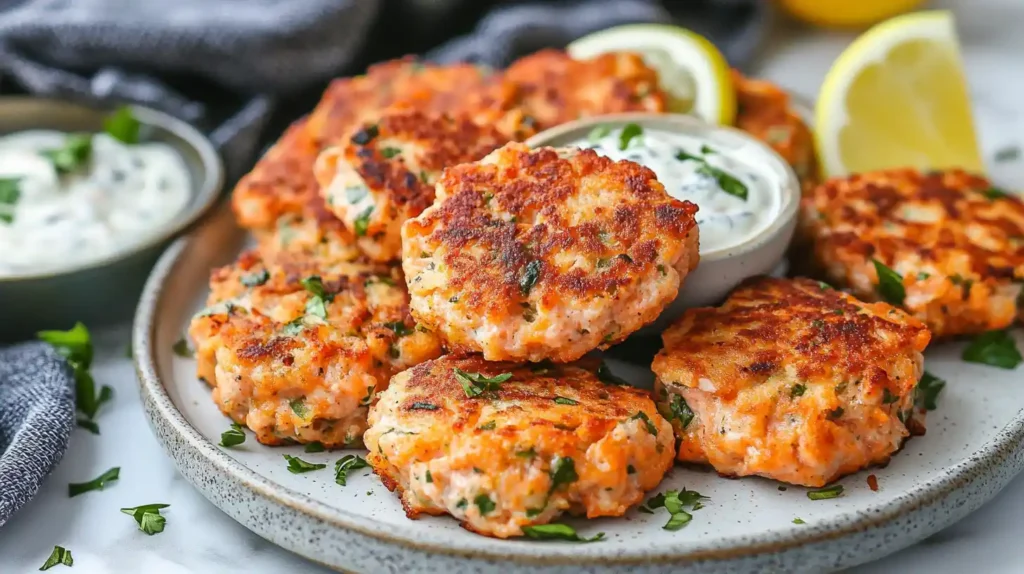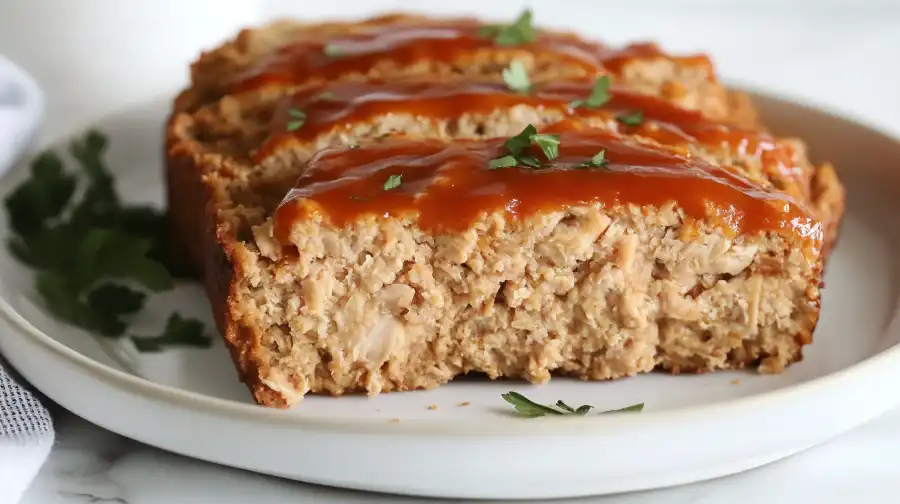Oven baked salmon in foil is perfect for a quick and tasty dinner. It keeps the fish moist and adds a nice crunch on the outside. This recipe is great for those busy weeknights because it’s easy to make.
Learn how to bake salmon in foil at 400°F for a quick and delicious meal. This guide will help you pick the right ingredients, season it just right, and get that perfect crisp skin. Whether you choose coho or another type, you’ll make a meal that’s both healthy and easy to clean up. Ready to make a restaurant-quality salmon dish at home? Let’s get started!
Why Foil-Baked Salmon Should Be Your Go-To Dinner Option
Cooking silver salmon recipe in foil is a game-changer. It’s quick, easy, and healthy. Perfect for busy nights or small kitchens.
Health Benefits of This Cooking Method
Foil baking keeps nutrients locked in. It preserves omega-3s and vitamins like vitamin D. Plus, it’s low in fat, great for your heart.
Time-Saving Advantages for Busy Weeknights
Save time with this method. It’s fast and simple:
- Marinate and bake in one step
- No flipping or constant monitoring needed
- Perfect for last-minute meals
It’s great for beginners. Try a silver salmon recipe for a quick, protein-rich dinner.
Minimal Cleanup Required
No messy pots or fish smells. Just toss the foil. Cleanup is quick, and your kitchen stays clean. It’s also easy on your pans.
Perfect Oven Baked Salmon in Foil: Ingredients You’ll Need
Choosing the right ingredients is key for a great coho recipe or oven baked salmon in foil. Start with fresh, high-quality parts to bring out salmon’s natural taste.
Choosing the Right Salmon (Coho, Silver, or Other Varieties)
Choose Coho salmon for its buttery texture and mild taste. Silver or sockeye are good choices too. Look for fillets with clear eyes, firm flesh, and a clean scent.
Aim for 6-8 ounces per serving. Skin-on fillets get crispy, but skin-off works well too.
Essential Seasonings and Flavor Enhancers
- Salt and pepper balance the fish’s richness.
- Lemon adds brightness—use a wedge to squeeze over the fillet before baking.
- Garlic (minced) and olive oil (2 tablespoons per fillet) boost moisture and depth.
- Herbs like dill or thyme enhance without overpowering.
Optional Add-ins for Flavor Variation
Customize your dish with these mix-ins:
- Asian-inspired: 1 tablespoon soy sauce, 1 teaspoon grated ginger, sesame seeds.
- Mediterranean twist: ¼ cup halved cherry tomatoes, 10 pitted Kalamata olives, 1 teaspoon capers.
- Herb blend: 1 tablespoon chopped parsley, ½ teaspoon dried thyme.
Pair ingredients based on your preference. Adjust quantities to match the number of servings.
Preparing Your Salmon for Foil Baking
Getting your salmon ready for foil baking is key. Follow these steps for a perfect salmon packet:
- Clean and dry the salmon well. Use paper towels to remove extra moisture. This helps get crispy skin if you want it.
- Check the fillets for pin bones. Use tweezers to carefully pull out any bones before seasoning.
- Cut 12-inch squares of foil for each fillet. Fold the edges ½ inch to make the salmon packet strong and prevent tears.
- Lightly oil the foil with cooking spray or melted butter. This prevents sticking without hiding the fish’s flavor.
- Put salmon skin-side down for crispy skin or face-up for tender skin. Season both sides with herbs, salt, and pepper.
- Add sliced veggies like bell peppers or lemon wedges around the salmon. Make sure they’re spread out to avoid overcrowding.

- Seal the foil edges tightly but leave a 1-inch gap for steam to flow.
- Always check for bones by running your fingers along the flesh before sealing.
- Use parchment paper under the foil if you’re worried about flavor transfer.
Don’t overstuff the salmon packet. Fold the foil tightly to keep heat in but loosely to let steam move. Good prep means even cooking and the best flavor for your oven-baked salmon in foil.
The Baking Process: Temperature, Timing, and Techniques
Getting the oven’s heat right is key for oven baked salmon in foil perfection. Preheat to 400°F. For 1-inch fillets, bake for how long do I bake salmon at 400? It’s 15–20 minutes. Use a thermometer to check it’s 145°F inside and flakes easily.
Creating packets is essential. Lay foil flat, season the salmon, and fold edges tightly but leave a small air pocket. This traps steam for even cooking without drying out. For crispy salmon in oven, open packets for the last 3–5 minutes to crisp the skin. Or, finish under a broiler for 2–3 minutes, watching to avoid burning.
For thick fillets over 1.5 inches, add 5–10 minutes per quarter-inch. Flip halfway for even cooking. Always let salmon rest 5 minutes after baking to keep juices in. Open packets carefully—steam escapes fast, so tilt away from your face.
- Thickness matters: Adjust time based on fillet size
- Broil for crunch: Adds crispy salmon in oven texture
- Rest before serving: Prevents sogginess and ensures even heat
Serving Suggestions and Complementary Side Dishes
Make your oven baked salmon in foil even better with the right sides. Place the salmon on a platter with fresh herbs like dill or parsley. Add a drizzle of olive oil and lemon wedges for a zesty touch.
- Grain-based sides: Try wild rice pilaf, tangy quinoa salad, or buttery couscous. These grains soak up the salmon’s flavors and provide a solid base.
- Vegetables: Roasted asparagus, steamed broccoli, or garlic-sautéed spinach are great. They add flavor without overpowering the salmon.
- Starchy options: Crispy roasted potatoes, creamy sweet potato mash, or a warm baguette soak up juices. They add a nice texture.
For large salmon at parties, serve family-style with sides in shared bowls. Offer sauces like creamy dill, zesty lemon butter, or cool cucumber yogurt for dipping. Choose crisp whites like Sauvignon Blanc or light reds like Pinot Noir for drinks. Or, go for iced herbal tea or sparkling water for those who don’t drink alcohol.
Plan your portions by thinking of 6-8 oz of salmon per person. Arrange your sides in a way that looks good and highlights the salmon. This way, everyone will enjoy the meal.
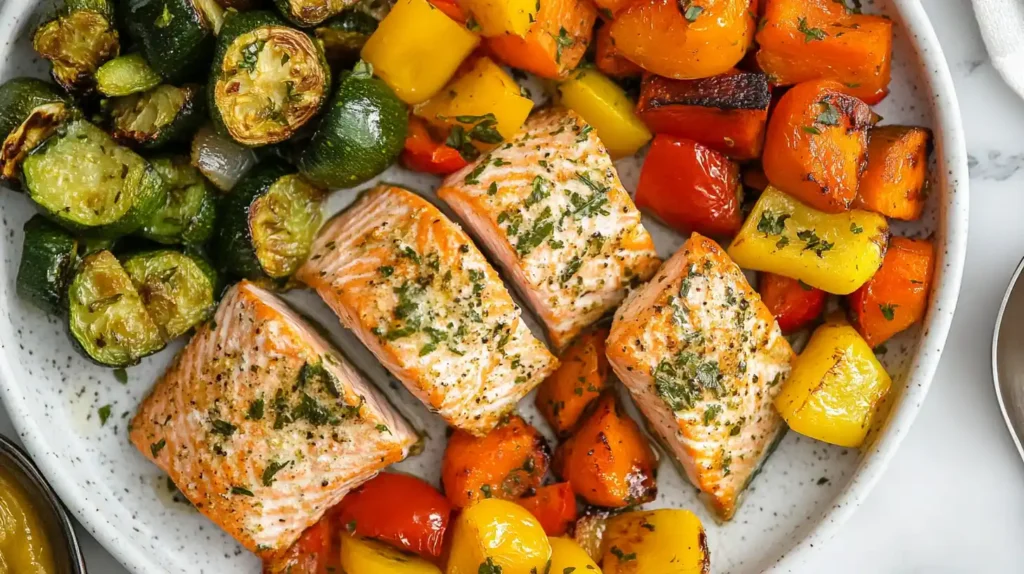
Conclusion
Oven baked salmon in foil is a simple yet rewarding way to enjoy tender, flavorful fish. Whether you’re using coho salmon recipe techniques or experimenting with silver salmon recipe variations, this method ensures moist results with minimal effort. The foil traps natural juices while keeping cleanup effortless, making it perfect for busy weeknights.
Focus on seasoning the fish well—try garlic, lemon, or herbs—and wrap tightly to prevent leaks. Baking at 400°F for 12-15 minutes cooks the salmon to flaky perfection, even for thicker fillets. If the skin isn’t crispy, try placing the foil packet skin-side up and broiling for the last 2-3 minutes.
Don’t hesitate to mix in veggies like asparagus or broccoli for added flavor and nutrition. This technique works for all salmon types, so feel free to adjust seasonings to suit your taste. With this method, you’ll master restaurant-quality meals at home, no matter your cooking experience. Your next dinner just got easier—and tastier.
FAQ
How do I know when my salmon is cooked?
Salmon is ready when it hits 145°F inside. It should feel flaky and look opaque. You can also check by pressing it with a fork; it should flake easily.
What is the best way to cook coho salmon?
Baking coho salmon in foil is the best method. It keeps the fish moist and flavorful. Plus, it’s easy to clean up. You can add seasonings and veggies for extra taste.
How long do I bake salmon at 400°F?
For 1-inch thick salmon fillets, bake at 400°F for 15 to 20 minutes. Thinner fillets cook faster, while thicker ones take longer.
What can I add to the salmon packet for extra flavor?
Add sliced veggies like bell peppers or zucchini. Fresh herbs like dill or parsley and citrus slices also boost flavor.
How can I achieve crispy salmon skin in the oven?
For crispy skin, open the foil for the last few minutes. Or, use a broiler for a couple of minutes. You can also sear the skin before baking.
What’s the difference between coho and silver salmon?
Coho salmon, also called silver salmon, has a rich flavor and less fat. It’s firm, making it great for grilling or baking in foil.
Can I freeze salmon before baking it?
Yes, you can freeze salmon before baking. Wrap it well in plastic or freezer-safe packaging. Thaw it in the fridge before cooking.
What side dishes pair well with salmon?
Salmon goes well with wild rice pilaf, roasted veggies, quinoa salad, or creamy mashed potatoes. These dishes complement the fish’s rich flavors.
How can I ensure that my salmon doesn’t stick to the foil?
To avoid sticking, lightly oil the foil or use parchment paper. Place skin-side down if your fillets have skin. This makes them easier to release.
What are the health benefits of eating salmon?
Salmon is full of omega-3 fatty acids, good for the heart. It’s also rich in protein, vitamins, and minerals. Cooking it in foil helps keep these nutrients.
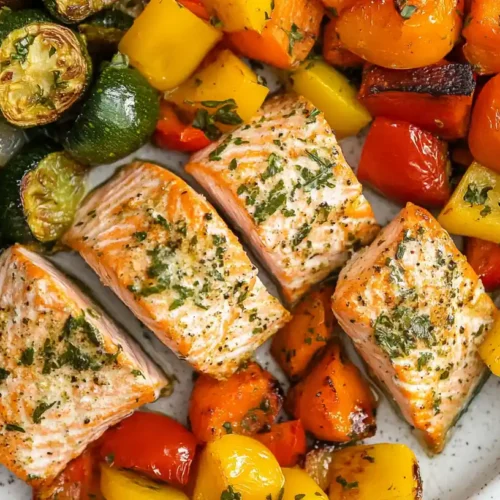
oven baked salmon in foil
Equipment
- 1 Oven
- 1 Baking sheet
- 1 Aluminum foil
- 1 Knife
- 1 Cutting board
- 1 Measuring spoons
- 1 Small bowl for seasoning mix
- 1 Tongs
- 1 Paper towels
- 1 Cooking spray or brush
Ingredients
- 4 salmon fillets 6-8 ounces each, skin-on or skin-off
- 2 tbsp olive oil
- 1 tbsp salt
- 1/2 tbsp black pepper
- 2 cloves garlic minced
- 1 lemon sliced
- 1 tbsp dried dill or thyme
Optional (Asian style):
- 1 tbsp soy sauce
- 1 tbsp grated ginger
Optional (Mediterranean style):
- ¼ cup cherry tomatoes halved
- 10 pitted Kalamata olives
- 1 tbsp capers
Instructions
- Preheat oven to 400°F (200°C).
- Pat salmon fillets dry with paper towels. Remove pin bones if necessary.
- Cut foil into 12-inch squares and lightly oil them.
- Place salmon fillets skin-side down on the foil.
- Season with salt, pepper, garlic, and herbs. Drizzle with olive oil.
- Top with lemon slices and optional ingredients for extra flavor.
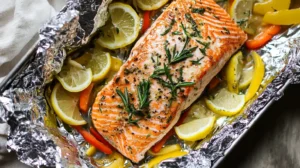
- Seal the foil packets tightly, leaving a small air pocket inside.
- Bake at 400°F for 15-20 minutes until salmon is opaque and flakes easily.
- For crispy skin, open the foil and broil for 2-3 minutes.
- Let salmon rest for 5 minutes before serving.
